Moving on to sampling over the body, I looked back at the brief specifications to the functionality of the bandage or wound covering, and how I could express this in my own samples and material structures. The wound covering for Smith and Nephew needed to be breathable, waterproof, structured and antibacterial. Looking at these properties initially got me looking at how something could fit over the arm as a bandage or protection. I also wanted to show that something could be created using an aesthetic element also, by using the copper, heat sensitive inks and natural dyes which also served their purpose in the brief. The copper gave the bandage a structural soundness that meant the textile could be bent over curves or kept more rigid in certain places. The heat sensitive inks creates an interesting aesthetic as well as giving an added application of the reaction to heat, potentially to be used in a medical sense, to detect when a wound may have become more infected and may need more treatment. This was particularly inspired by the works of Kerri Wallace, who looked at sports design and how thermochromic inks could be used to detect body heat, which would aid technology and understanding of the body in performance sport. The use of a hemp linen or jersey cloth created a softer feel to touch and against the skin, as well as the fact that the hemp itself provided an antibacterial quality to the bandage. I dyed the hemp material with nettles, which produced a very subtle tone, unlike when dyed with onion skins which produced a more intense orange and subtle pinks. Being naturally high in tannins, the onion dyed fabric also would produce an antibacterial quality to the bandage, adding to the specifications of the brief and overall functionality of the bandage.
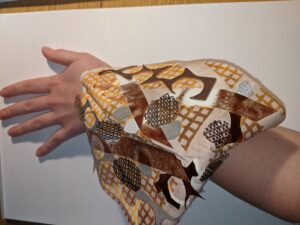
The piece above primarily looked at how I could create something more aesthetic with the materials available to me, yet still fitting over the body. Here I used zip ties to fix the sample to the arm, which wasn’t very functional, but it was a good place to start experimenting. I liked the way the fabric pops up and creates a more 3D aspect.
Below, I looked back at my artist research of Jenny Leary and how she uses magnets to create textile surfaces. She does this by attaching magnets to places for interior textiles. By placing a magnet onto a wall or ceiling, parts of a magnetic textile could then form onto the surface, creating a diverse and changeable design. The possibilities of using magnets as a material for sure are worth exploring within textiles, but for this project I wanted to focus on how this could be used to attach the fabric to another material or around a part of the body. This can be seen below on one of my samples which I have joined together using a magnetic latch, which safely secures the bandage in place.

Another aspect of this particular design was the top which formed over the hand, on top of which I created this design inspired by the structure of the Pomelo fruit, which had these porous, circular markings. I used a range of materials to achieve this look, which fitted in between the screen printing in the back. By using thermochromic inks, when heat was applied to the material, the surface colour would change to a brighter yellow. As you can see this has started to change due to the temperature omitted from my body, in places where the skin and the bandage are close. The function of using a thermochromic ink is for an added aesthetic and a functional use to indicate when a patient may need to seek further medical attention. The Smith and Nephew company are all about providing safety and comfort in their products for a better quality of life and for better performance. not only does the heat changing ink add a certain aesthetic, but also the thermochromic properties could be used for medical use. If a wound becomes infected then more heat is omitted from the infected area – perhaps if after a certain amount of time the bandage had not returned to its normal colour then the patient could refer to a professional or seek more advice, without having to remove the bandage to check the state of the wound, therefore reducing the risk of further infection by exposure. This would all be indicated by the colour of the bandage at the time. I chose to work with the orange to yellow colours as the bright yellow draws the attention, potentially alerting the patient of a wound becoming infected or too hot if a burn for example. Obviously, the temperature ratios for this experiment are reacting to my body heat in these samples, but I felt there was some potential in what could be achieved through using thermochromic inks in a medical sense.

Below, I have shown the aesthetic of my design more clearly. As mentioned above the pattern is inspired by the molecular structure of the Pomelo fruit peel, holes and groves of mushrooms and naturally forming structures in nature. The spreading effect of the design reminded me of my inspiration from the movement of the Slime Mold organism, that grows and contracts in order to form paths to food. The bright yellow achieved by applied heat also brought out these colours similar to the almost neon yellow that the slime mold has. Not only did nature inspire the functionality of my designs, but the aesthetic elements too.
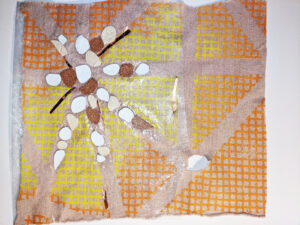
Finally, I have shown below the bandage laid out before it has been formed over the arm/lower leg. This particular sized bandage also incorporated a thumb hole for the arm, to aid comfort for the wearer. I then fused the bandage over with a plastic film to make the design waterproof, which also secured the small design over it too. As you can see, the effect from using applied heat to change the colour of the fabric is shown also, where the duller orange transforms into the bright yellow, then fading back again when cooled down.
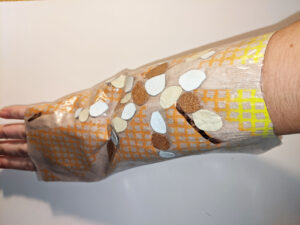
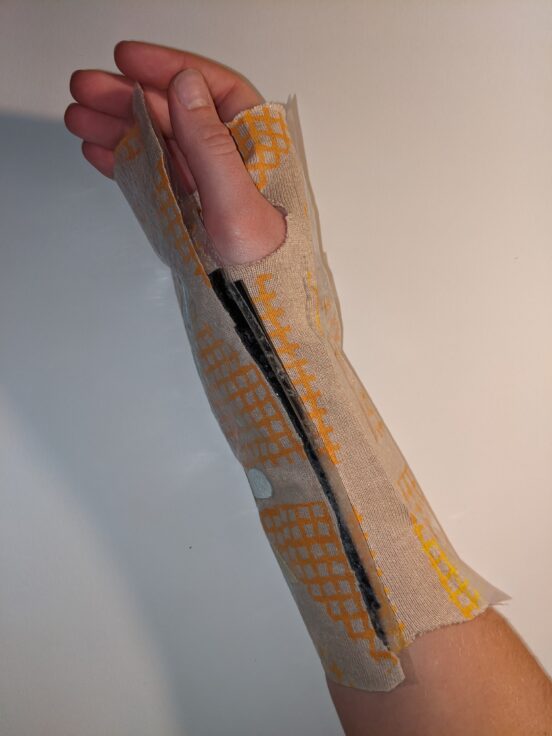

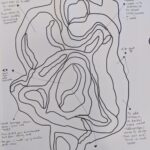
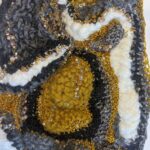
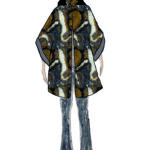
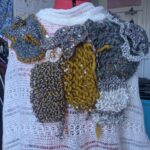
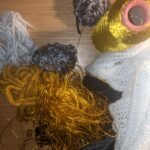

lrichar3
18 November 2020 — 10:35 pm
The experimentation in this post is very well founded in convincingly informed planning. This demonstrates a good understanding of the needs of the product you are developing your materials for. The use of the thermochromics is intriguing. Striking the balance between the functionality and the aesthetics is the biggest challenge. Take care not to add design features as unnecessary decoration.